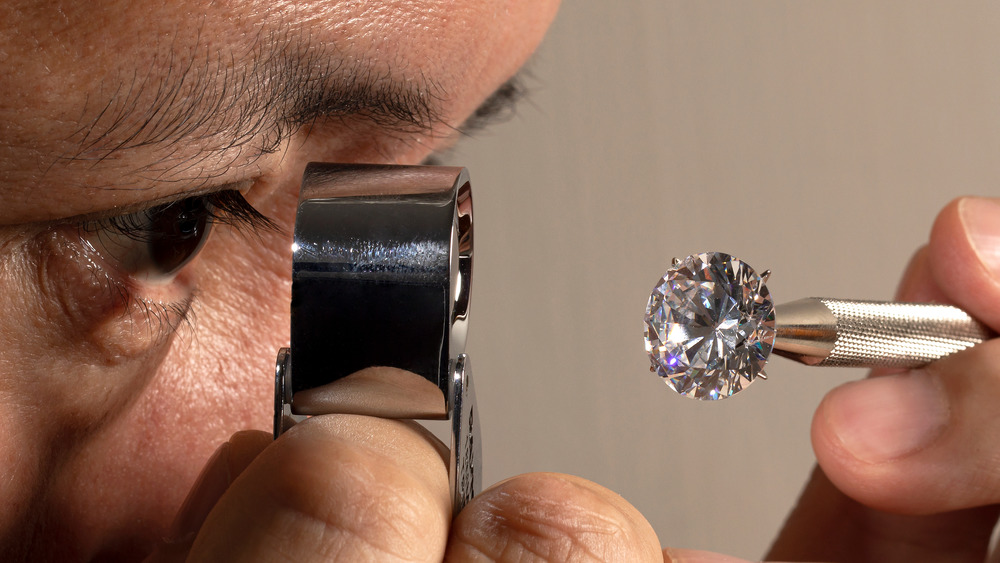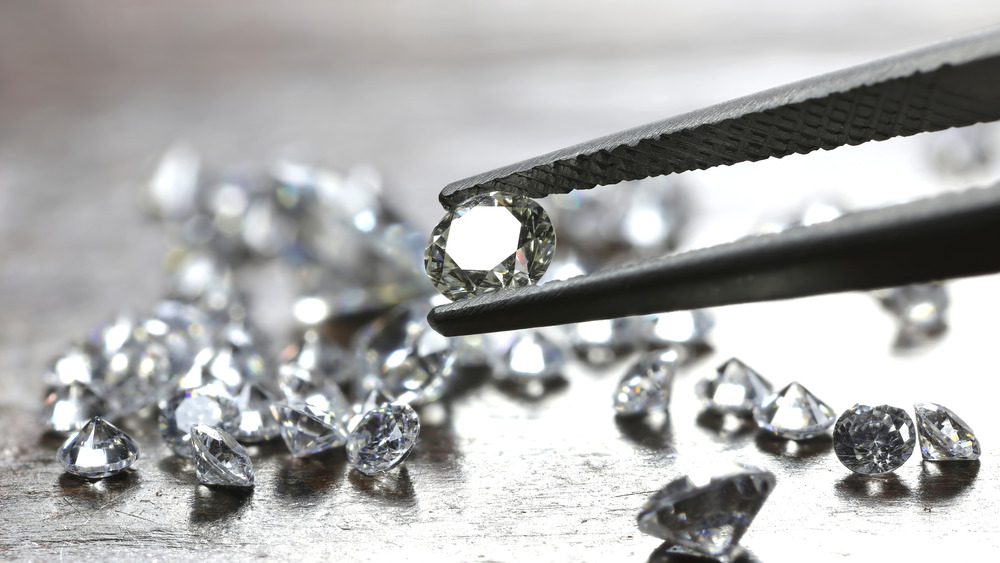Here's The Real Difference Between Real And Synthetic Diamonds
Diamonds are a girl's best friend, or so sang Marilyn Monroe in Gentlemen Prefer Blondes and Nicole Kidman in Moulin Rouge. While all diamonds are not created the same way — they can be dug from the earth or made in a lab — both are pretty much identical, visually and chemically (via Do Amore).
Some people call lab-made diamonds fake, but that's not true. According to the jeweler Walters and Hogsett, the ones made in a lab are made with the same basic process by which the earth makes diamonds — pure carbon subjected to high pressure and high temperature. But in a lab, you don't have to wait eons for the diamond to be created.
To the naked eye, a lab-made diamond and an organic diamond both have the same shine, sparkle, and clarity, and the two are equally as strong. Do Amore explains the differences that only a jeweler with a loupe would be able to identify. Natural diamonds have a tiny bit of nitrogen, and lab diamonds have a unique fluorescence and are laser inscribed. You can still get a variety of sizes, shapes, and even colors, and the price tag will generally be much lower for the lab diamonds (via Do Amore).
Lab diamonds don't have the blood diamond stigma
The biggest difference between the two comes down for many to an issue of ethics. There have been links between diamond mining and human rights abuses (via BBC). Some of this was featured in the 2006 movie, Blood Diamond, starring Leonardo DiCaprio, telling the story of war funded by the sale of diamonds. It's a fictional story, of course. But it's based in reality, and as the director of the film explained to Foreign Policy, "My job is to tell the truth about what's happening as best I can ... The issue of diamonds in Africa is inseparable from the issue of child soldiers."
Diamonds mined from the earth can also have negative environmental impacts, with pollution of local water sources and higher carbon emissions per carat when compared to lab diamonds (via BBC).
Buying lab diamonds can be seen as a move towards sustainability and away from inadvertently helping fund fighting. And lab-made diamonds are becoming more popular in recent years. De Beers, renowned for its diamonds, is leaning into lab-made diamonds with a new factory recently opened in Oregon that will be able to produce in a year 200,000 carats of polished diamonds, which would make 400,000 pieces of diamond jewelry (via Observer). De Beers isn't the only one. INSTORE surveyed North American jewelers and found that over 50% stock lab diamonds, up from 10% just four years ago.

